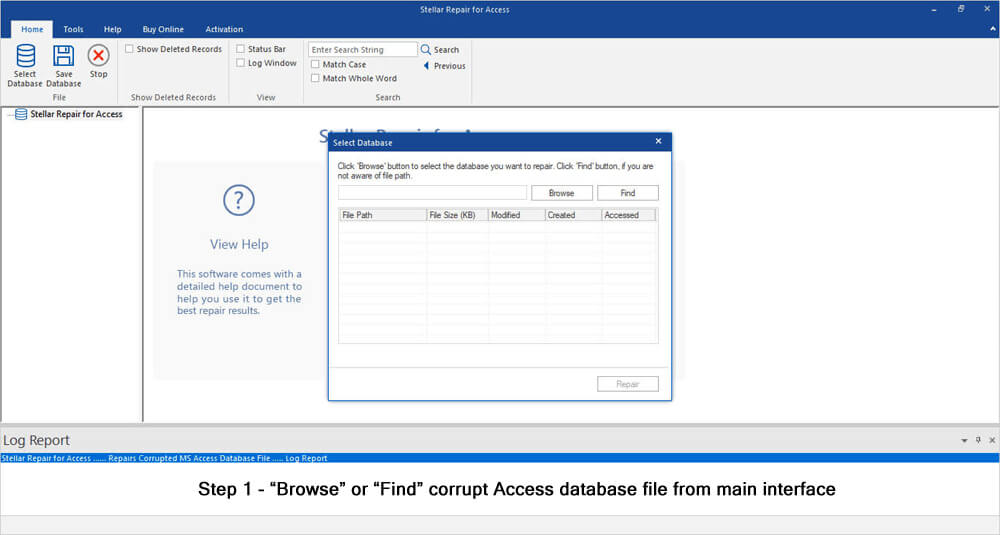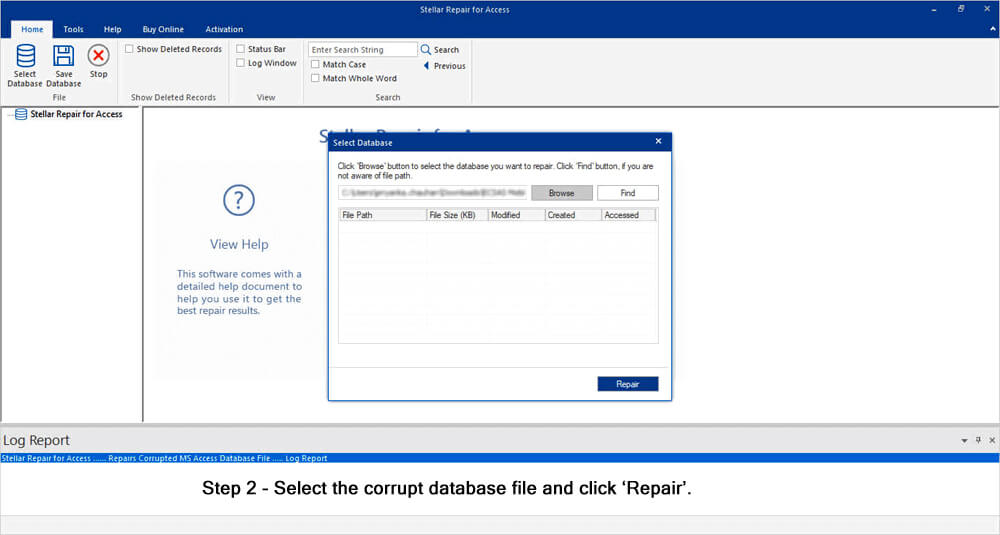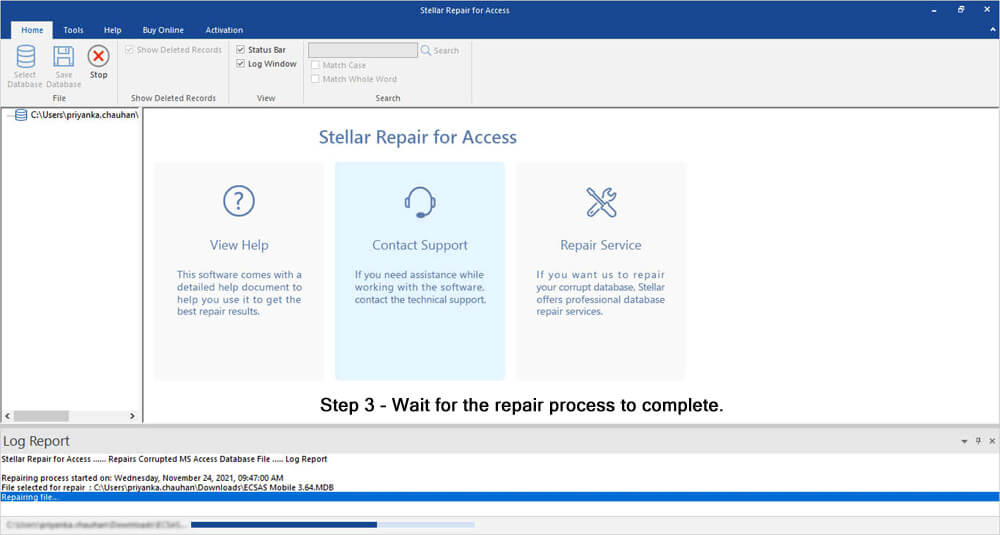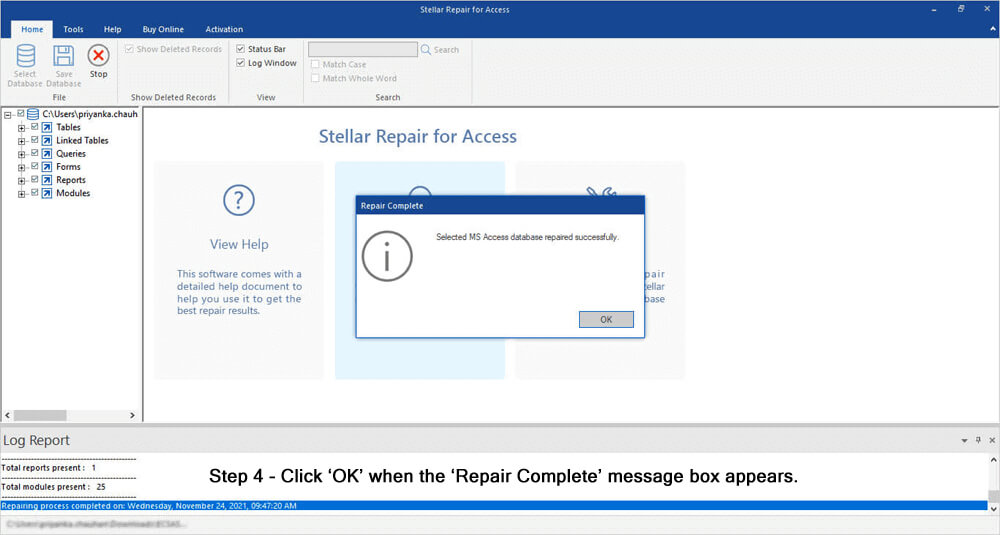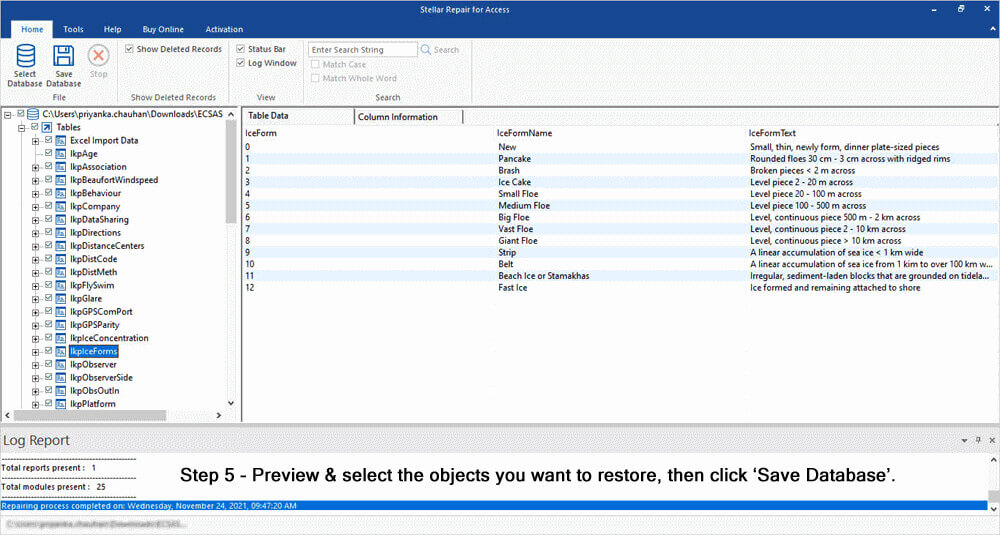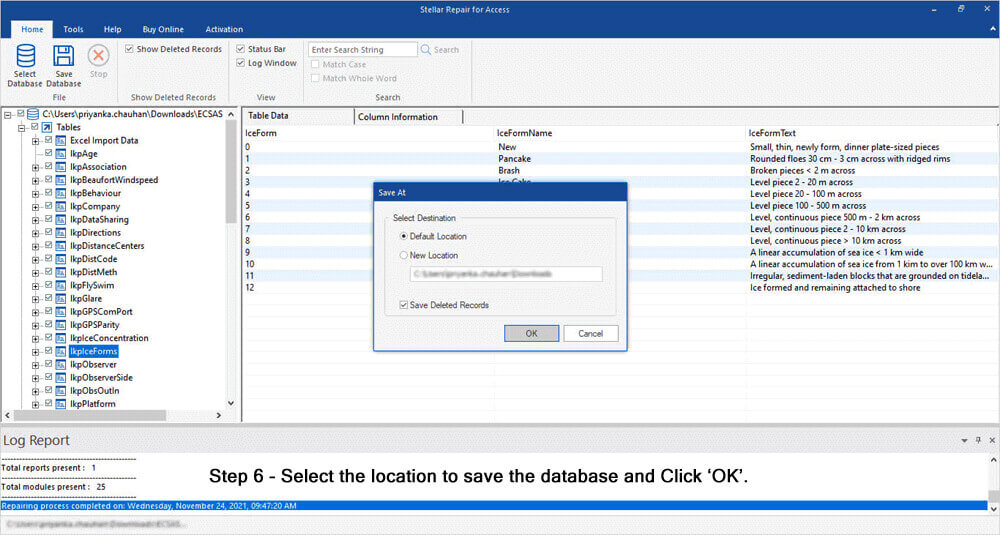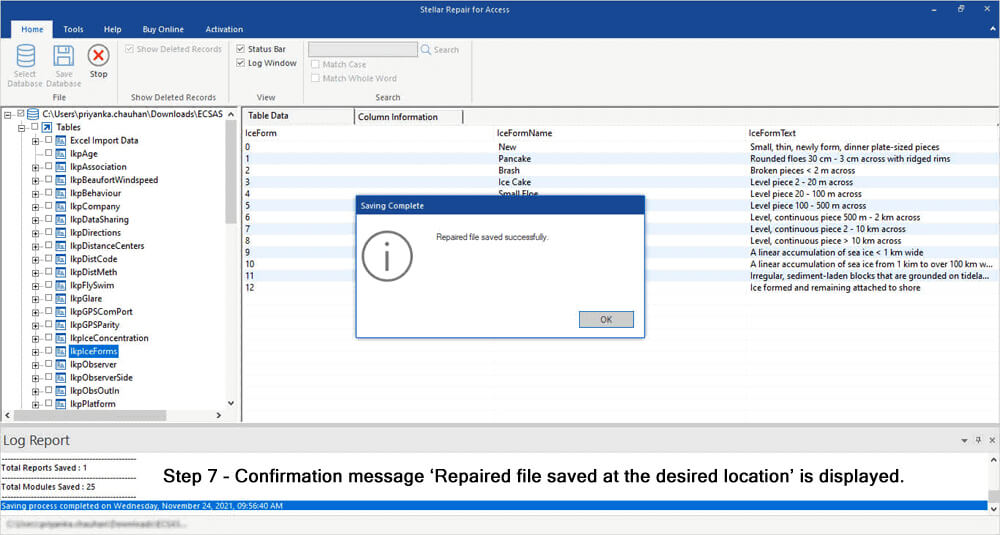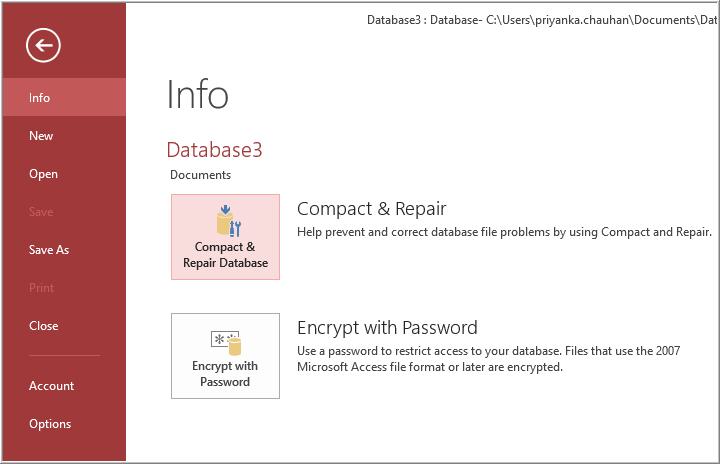Access is Microsoft’s proprietary Database Management System (DBMS) which is being preferred by many corporates and individuals because of its easy-to-grasp interface. Sometimes, Access database files i.e. (.ACCDB & .MDB) get corrupt due to numerous reasons that make the database inaccessible. This blog dives into the realm of Access database repair, discovering the reasons for corruption, and other vital info including how to repair the corrupt Access database.
So, let’s begin…
Free MS Access Database Repair Tool
Repair corrupt MDB and ACCDB database files and recover deleted database tables, queries, indexes and records easily. Try Now!
By clicking the button above and installing Stellar Repair for Access (14.8 MB), I acknowledge that I have read and agree to the End User License Agreement and Privacy Policy of this site.
What Causes an Access Database to Be Corrupted?
We cannot blame a single reason for database corruption in Access. Below we have shortlisted the major reasons:
- Often editing Memo field data
- Harmful virus attack
- Interruption while making changes in the database file
- Hardware failure
- Software bugs
- Conflict Jet database engine
- Inappropriately designed plugins can cause the Access program to crash.
As you have known the common causes, it’s time to solve this issue.
Recommended: Use the Best Access Database Repair Software
In many cases, severe database corruption can’t be fixed by manual methods. In that instance, you must try Access Database Repair Software. This ultimate tool is efficient for repairing corrupt Access database files and effectively restores Access Database objects including tables, reports, queries, forms, records, and indexes along with modules, macros, etc.
Why To Choose Access Repair & Recovery Software?
- Provide Complete Access to Database Repair of corrupted OR damaged MDB and ACCDB files.
- Gives the option of previewing all recoverable items before the recovery.
- Recover all Access Database Objects including Linked Tables, Forms, Modules, Macros, Queries, Relationships, Indexes, and so on.
- Support all Microsoft Access versions – 2000/2002/2007/2003/ 2010/ 2013/2016/2019.

* By clicking the Download button above and installing Stellar Repair for Access (14.8 MB), I acknowledge that I have read and agree to the End User License Agreement and Privacy Policy of this site.
How to Use this Tool?
How to Compact And Repair Access Database Under Different Circumstances?
Here are the different scenarios in which the Compact and Repair tool can be used to repair Access database. Have a look, over them one by one:
1. Automatically Compact And Repair A Database When It Closes
2. Manually Compact And Repair A Database That You Have Opened
3. Manually Compact And Repair A Database That Is Not Open
1- Automatically Compact And Repair A Database When It Closes
Select the compact on close database options in order to automatically Compact And Repair a database when it is close. This option only works for the databases that are already open. So set this database individually for each of the databases that you want to compact and repair. In the case of multi-user databases, it’s better not to avoid using this option. Using this option can temporarily disrupt database availability.
Steps To Compact And Repair A Database When It Closes
- Firstly open the Access database, go to the File> Options.
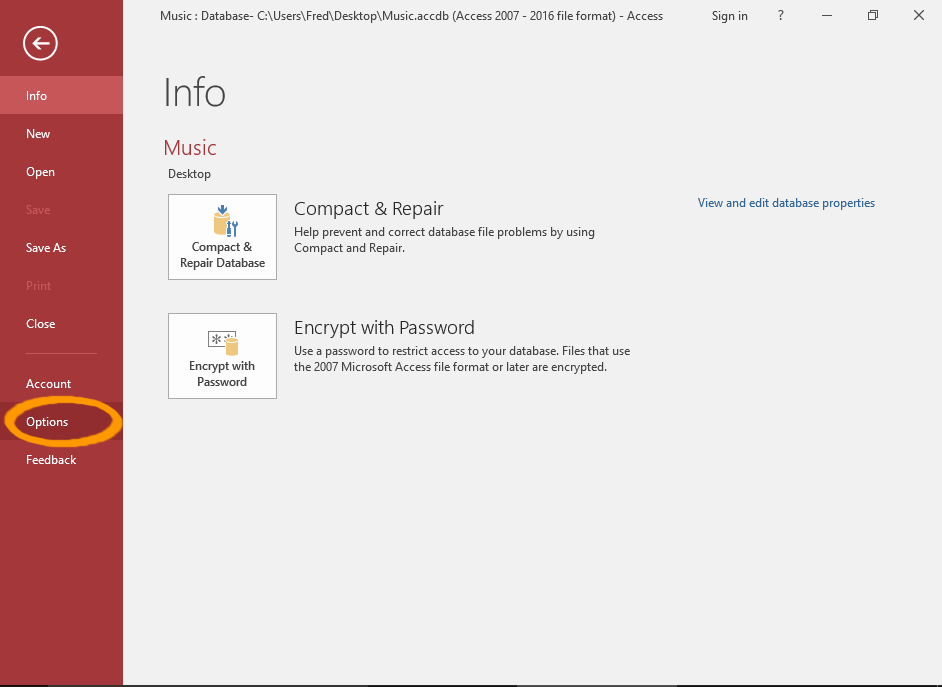
- In the Access Options dialog box, select Current Database.
- In the Application Options, choose the Compact on Close checkbox.
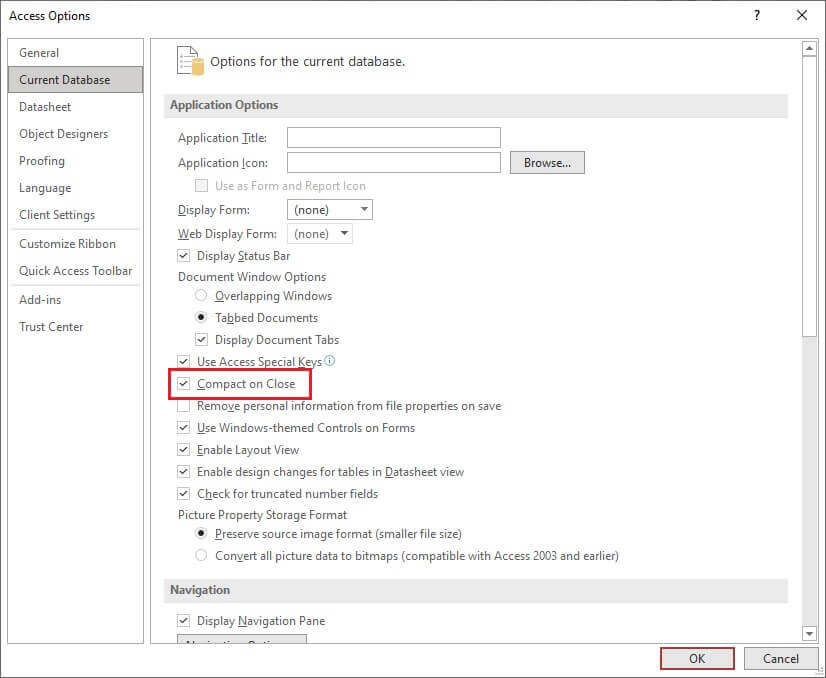
- After that press the OK option.
- At last close your database and reopen it again to see the changes.
Also Read: Compact and Repair Access Database (2023 Full Guide)
2- Manually Compact And Repair Access Database That You Have Open
This method is for the database that you can easily open or which is already open. Here are the steps to perform this task:
- Choose File> Info > Compact & Repair Database.
-
- Make a copy of the compacted and repaired database in the same location.
3- Manually Compact &Repair A Database That Is Not Open
This method seems helpful when the Access database denies getting opened. But before starting up the procedure make sure that no other users are currently using the database file.
- Start Access.
- In Access 2013, Access 2016, and Access 2019:
- Go to the template page, and double-tap the Blank Database.

- Select Database Tools> Compact and Repair Database.
- In the Database to Compact From the dialog box, search for the database and make double-tap to the database which you want to compact and repair.
- This step will create a copy of the compacted and repaired database in the same location.
Manual Ways to Repair Access Database Files
Apart from the inbuilt utility tool, you have other options as well to fix database corruption. So, let’s see what are other solutions available for Access database repair.
Way 1- Restore from Updated Backup
If you have kept an updated, valid, and proper backup of your Access database, in that case, you can use the healthy backup for restoring your database instead of repairing it.
The complete steps are here:
- Launch File Explorer, and choose the folder that contains the backup copy.
- Select & copy the backup file.
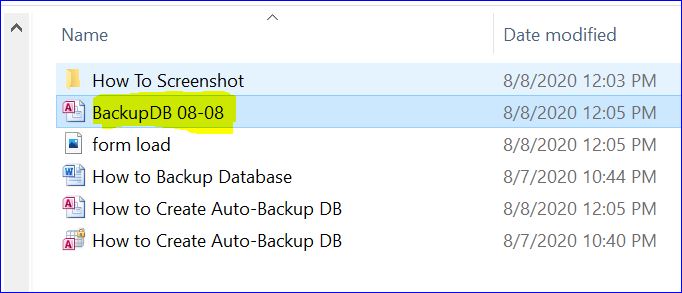
- Paste the copied file to the same place where the corrupted database file is saved.
- Once prompted, replace the existing database file with a backup copy.
Way 2- Repair the Access Database using JetComp.exe
MS Access offers a freeware utility JetComp.exe, in order to repair mdb/accdb file created with Microsoft Jet database engine 3.x.
Note: Before executing JetComp.exe, you need to rename the Master Client database to PROB.mdb.
Now you can easily run JetComp.exe from the Montel Application/support directory. Here are the following steps to repair database using JetComp.exe:

Step 1: Firstly you need to enter the full path (MonTel Datadirectory/CLIENTDB) and name PROB.mdb in Database to Compact From (Source): field.
Step 2: You need to enter the full path (MonTel Datadirectory/CLIENTDB) and full name ([ClientDB] section ClientDatabaseName + “.MDB”) that is likely to be CLIENT32.MDB.
Note: don’t make modifications in any other fields.
Step 3: At last tap to the Compact option.
- Once you get success, allow other users also to MonTel.
- But if in case you don’t get the success, don’t forget to restore CLIENT32.MDB (or whatever it’s named) from your backup copy. After this, you can delete PROB.mdb.
Way 3- Import the Corrupt Access Database into a New One
Another most opted solution to repair the Access Database is importing data from corrupt Access Database to the new one. So, here are the steps that you need to follow.
Step 1: At first, open the Microsoft Access on your PC.
Step 2: on the right-hand side pane, tap on the option of “create new database” files. Assign a name for the file and choose the location. Tap to the Create option to create the new database.
Step 3: This will make a database file and open it up in the Microsoft Access program. Click the external data at the top.

Step 4: To import the Access database tap to the Access option.
Step 5: You will see a get external data Access Database window opened on your screen.
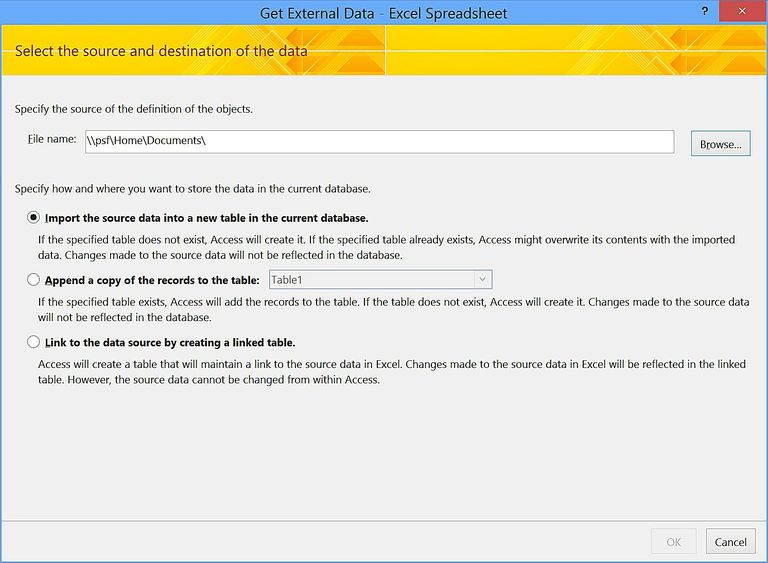
On this opened window tap to the Browse option to make a selection for the file that you want to import.
Step 6: On the opened dialog box of File Open, browse access database files and select it by clicking. Tap to the Open option to make confirmation for the selected items.
Step 7: In the edit box, you can easily take a look over the selected files. For further continuing of the process tap to the OK option.
Step 8: On Import objects dialogue box, choose the objects that you want to import from the selected Access database files. After the selection of the objects, tap to the OK option.

Step 9: Now you will successfully import all selected objects.

Step 10: If you want to save the above performed import steps for future work then check the Save import steps box. At last tap to the Close option.

Note:
This import Access database feature actually helps to import all the Access file objects like Tables, Forms, Reports, Queries, Macros, and Modules from corrupted Access Database to a new file.
Way 4- Deletion Of The .ldb/.laccdb File
.ldb/.laccdb file is mainly used to find which records have been locked in a shared database and by whom. If the database is open for shared usage then the .ldb/.laccdb file automatically gets created having the same name as that of the corresponding database (.mdb/.accdb).
Delete the .ldb/.laccdb file if it is present but before that close the corresponding .mdb/.accdb file.
How about an example,
Suppose, that you open the sample database Northwind.mdb for shared use in C:\Msoffice\Access folder, then it will automatically create a file named Northwind.ldb in the same folder. Well, this .ldb file automatically gets deleted when the last user quits the database with these two exceptions:
- When the last user doesn’t have permission for folder deletion, having .mdb file
- Or when the database is corrupted
This .ldb file has the complete list of users who all have opened the Database.
Way 5- Remove Compiled VBA Codes from Database
Even after trying the above manuals, if the database corruption issue persists, you can use the below command line switch from the Microsoft:
C:\Program Files\Microsoft Office\Office\MsAccess.exe /decompile C:\DatabasePath\FileName.mdb
Please Note: You have to change the above path for MsAccess.exe if you have installed it in the different location.
How to Prevent Access Database Corruption Entirely?
By following the below precautionary measures, you can prevent Access database corruption entirely.
Tip 1- Creating Regular Backup
Maintaining a regular backup of the Access database is really very helpful. As it helps protect or secure your data in a better way and later allows you to restore it easily.
Tip 2- Closing Access Program Properly
Terminating the MS Access application in an improper way can result in Access database corruption. So, always close the access program properly in the proper manner.
Tip 3- Split Access Database
If two or more users are simultaneously using the same database then splitting up the access database is the best option. Well, you can split up your Access database into two parts: Front end and Back-end.
Tip 4- Collision of Mac and Windows Users
The chances of database corruption get higher when the Windows and Mac users share the same network. Compared to Windows, the Mac system creates heavy traffic during the process of transferring and printing graphics. So, don’t allow the Windows and Mac users to collide on the same network.
Related FAQs:
Can Manual Methods Fully Repair a Corrupted Database?
No, manual methods do not provide guaranteed database repairing results.
Is There a Risk of Data Loss During the Repair Process?
Repairing the database using manual techniques might sometimes lead to data loss. However, an automatic solution (Access Repair Tool) can repair your corrupt database without any data loss.
Are Professional Repair Tools Suitable for Large Databases?
Yes, professional repair tools are suitable for both large and small databases.
Can I Recover Data from A Corrupted Access Database?
Yes, you can recover data from a corrupted Access database. Consider restoring the backup copy of the db file or seeking expert database recovery services.
Is There Third-Party Software Available for Access Database Repair?
Yes, there are various third-party tools available for repairing the Access database, such as:
- Stellar Repair for Access
- Kernel for Access Database Repair
- AccessFIX Access Database Repair
- Recoveryfix Access Repair
Also Read: How to Repair Access Database With MS Office Diagnose And Repair?
Conclusion
Repairing the Access database is a critical process to ensure the integrity & functionality of the database system. No matter whether you face partial or severe database corruption issues, you can easily repair Access database by following the above methods.
That’s all…
References:
 Still having issues? Fix them with this Access repair tool:
Still having issues? Fix them with this Access repair tool: This software repairs & restores all ACCDB/MDB objects including tables, reports, queries, records, forms, and indexes along with modules, macros, and other stuffs effectively.
- Download Stellar Repair for Access rated Great on Cnet (download starts on this page).
- Click Browse and Search option to locate corrupt Access database.
- Click Repair button to repair & preview the database objects.
